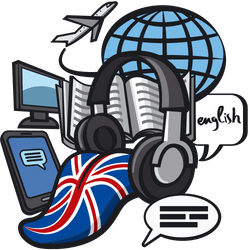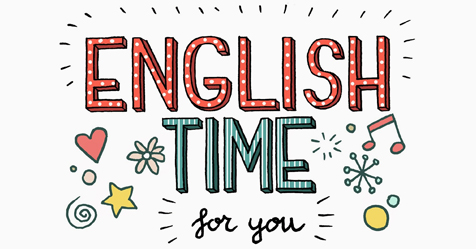In many schools, 3rd grade is the first year that students are introduced to English literature. They may start by studying stories that are specifically written for children, such as “The Cat in the Hat” by Dr. Seuss. As they progress through the year, they will read more complex works such as “The Great Gatsby” by F. Scott Fitzgerald.
In addition to reading, 3rd grade students also learn how to write essays. They may be asked to write about topics such as their favorite book or what they did over the weekend. In order to help them with their writing, teachers often give students feedback on their essays and provide specific instructions on how to improve their work.
In addition to reading and writing, 3rd grade students also learn about grammar and punctuation. They learn how to use commas, apostrophes, and other punctuation marks correctly in their writing. They also learn about different parts of speech, such as nouns, verbs, and adjectives. This knowledge helps them to create grammatically correct sentences.
Finally, 3rd grade students learn about rhetorical devices. These are techniques that writers use to make their writing more interesting and engaging. Some common rhetorical devices include alliteration, metaphor, and simile. By learning about these devices, 3rd grade students develop a better understanding of how to write effectively.
Vocabulary Building and Word Recognition
In English, 3rd graders learn new vocabulary words and how to recognize them. They also learn how to use these words in sentences. Vocabulary building is important for reading comprehension and academic success.
One way to help 3rd graders learn new vocabulary words is to provide them with a dictionary. They can look up the definitions of the words and use them in sentences. Another way to help 3rd graders learn new vocabulary words is to provide them with a list of words and have them write the definitions.
Word recognition is also important for 3rd graders. They need to be able to read the words on a page and understand what they are reading. To help with word recognition, 3rd graders should read aloud often. They should also read books that are at their reading level.
Reading Comprehension Strategies
3rd grade students in English learn how to read with comprehension. This includes understanding the main idea and important details of a text, making inferences, and recognizing vocabulary in context. Additionally, they learn how to summarize a text and determine the author’s purpose.
To understand the main idea and important details of a text, students read closely and make connections to what they know. They also ask themselves questions about the text to help them focus on what is important. For example, to understand what a text is about, a student might ask, “What is the main event or topic of the text?” or “What are the most important details?”
To make inferences, students use what they know about the world and the text to figure out what is going on in the story. They also use their understanding of the characters, setting, and plot to infer what might happen next. For example, after reading a story about a girl who lost her dog, a student might infer that the girl is sad because her dog is gone.
To recognize vocabulary in context, students use the clues in the text to figure out the meaning of unknown words. They also use pictures and the surrounding text to help them understand words that are used in multiple ways or that have multiple meanings. For example, after reading about a girl who is going to the beach, a student might know that the word “sunset” refers to the time of day when the sun is setting.
To summarize a text, students identify the most important ideas and put them in their own words. This helps them understand the main point of the text and makes it easier to remember what they read. For example, after reading a story about a girl who is going to the beach, a student might summarize it by saying, “The girl is going to the beach with her family and she is excited to go in the water.”
To determine the author’s purpose, students think about why the author wrote the text. They may ask themselves, “What is the author trying to tell me?” or “What is the author’s point of view?” For example, after reading an article about a new law, a student might think about the author’s purpose by asking, “Why did the author write this article?”
Grammar and Sentence Structure
English grammar and sentence structure are some of the most important concepts that 3rd graders learn in school. These concepts help students to understand how to construct sentences properly, and to communicate effectively in writing.
One of the most basic things that 3rd graders learn in English grammar is how to form sentences. They learn how to identify the subject and the object of a sentence, and how to use proper verb tense and conjugation. They also learn about different types of sentences, such as statement, question, and command sentences.
In addition to learning about basic sentence structure, 3rd graders also learn about specific parts of speech. They learn about nouns, pronouns, verbs, adjectives, and adverbs, and how to use these words correctly in sentences. They also learn about the different functions that these parts of speech can serve in a sentence.
Another important concept that 3rd graders learn in English grammar is punctuation. They learn about the different types of punctuation marks, and how to use them correctly in sentences. This includes things like commas, periods, and question marks.
Finally, 3rd graders also learn about basic sentence diagramming. This is a visual way of representing the structure of a sentence, and it can be helpful for students in understanding how a sentence is put together.
Writing Skills and Composition
In English Writing Skills and Composition, 3rd graders learn how to write essays, stories, and reports. They learn how to use proper grammar, punctuation, and spelling. They also learn how to organize their thoughts and ideas. In addition, they learn how to express their thoughts and ideas clearly and effectively.
Listening and Speaking Skills
3rd grade students are still honing their basic English skills, including listening and speaking. In general, they are expected to develop their ability to listen and understand spoken language, and to speak with increasing clarity and fluency.
To improve their listening skills, 3rd grade students may be asked to do things like listen to a story and answer comprehension questions, or listen to a dialogue or interview and answer questions about it. They may also be asked to identify specific information in a spoken text, such as the main idea or a detail.
To improve their speaking skills, 3rd grade students may be asked to read aloud, to paraphrase a text, or to give a brief oral presentation. They may also be asked to engage in dialogues with classmates, to express their opinion on a topic, or to read a text aloud and then answer questions about it.
Literary Elements and Analysis
In third grade, students learn about literary elements and analysis. They learn about the different parts of a story, such as the setting, characters, and plot. They also learn how to analyze a story, looking for things such as theme and motif.
Phonics and Phonological Awareness
Phonics and phonological awareness are two critical areas of reading instruction in 3rd grade. Phonics teaches children the relationships between letters and sounds, while phonological awareness helps children understand the individual sounds that make up words.
In phonics instruction, children learn to identify the individual letter sounds in words. They also learn how to blend those letter sounds together to form words. This phonemic awareness skill helps children read unfamiliar words by sounding them out.
In phonological awareness instruction, children learn to break down words into their individual sounds. This helps them understand the structure of words and how they are pronounced. Phonological awareness also helps children develop a better understanding of language and how it works.
Both phonics and phonological awareness are important for reading comprehension. The more children know about how words are pronounced and put together, the easier it is for them to understand what they are reading.
Reading Fluency and Expression
In English language arts, 3rd grade students learn how to read fluently and expressively. Fluency is the ability to read quickly and accurately with comprehension. Expression is the ability to read with feeling and understanding the author’s intent.
To help students achieve fluency, teachers focus on teaching the phonemes (sounds) of the English language. Students learn the sounds of the alphabet, how to blend sounds together to read words, and how to read fluently with expression.
One strategy for teaching fluency is to use a reading buddy. A reading buddy is a student who helps another student read aloud. The buddy listens to the student read and provides feedback on fluency. This helps the student become more aware of how they are reading and makes them more likely to read fluently.
To help students achieve expressive reading, teachers focus on teaching students how to read with feeling. This includes reading with the correct tone, pacing, and volume. Students also learn how to read with emotion, using facial expressions and gestures to show how they feel about the text.
One strategy for teaching expressive reading is to use drama activities. Drama activities allow students to express the emotions in a text by acting out the scenes. This helps students understand the text better and allows them to show their understanding through their acting.



